Introduction
In this essay I will be talking about single camera techniques used in Film and TV production. I will be explaining the advantages and the disadvantages as well as what popular genres use single camera techniques. I will be comparing some of the techniques to multi-camera production explaining how they are different from each other. Lets get started!
The Camera
As you can tell from the title a single camera production involves only one single camera. Because a camera is used to draw an audience into the frame / the action within the scene there are many opportunities to become creative with different angles and shots. With this creativity, it can create a more realistic and intimate feel to it making the footage more enjoyable for the audience as it will draw them into the diegesis. If a film or TV show has a certain genre like Horror, then certain conventions need to be considered and may only require one, single camera. However, using a single camera in a production may appeal to one person but not another which can cause some issues on set.
Having a single camera in a production can be an advantage for a Director as it will allow them to focus on one camera in each scene, giving them more control on the shot they want. The lack of multiple cameras also allows for more room on set. This can be an advantage for a a production as it allows more room for different shots and angles without the issue of other cameras or equipment in frame.
A single camera in a production requires every scene and section of scenes to be repeated over and over again. This is because that one camera is needed to capture the 'Master Shot' (every character or important action in one shot), close-ups, extreme close-ups etc. The constant repetition can make a production very time consuming and in theory cost more (if filming on stock footage). With the change in camera shots with each take can result in more continuity errors, making the production confusing for the audience. However, the constant repetition can help an actor or actress get into their character, adding to the realism of the film or TV programme. Re-shooting or repeating shots can provide more opportunities for more stylized angles.
Single Camera Set Up:
Multi-Camera Set Up:
Single Camera Set Up:
Multi-Camera Set Up:
Lighting
In film and TV, the scene or frame of shots need to look realistic unless a certain convention is being used. One way to do this is through the lighting you use in the scene. Having a well light scene can add to the realism to a production. However too much can look fake and noticeable to the audience. In single camera productions, lighting is easier to control as a scene can be lit according to the shot type or angle. This then makes the entire scene more realistic according to its narrative.
If lighting is short due to reasons like budget, then a reflector can be put in place. This allows some light, natural or artificial, to be reflected towards another object or subject, increasing the realism of the scene. Reflectors can be cheaper than another light source. In terms of lighting reflectors can also be used to make one shot look similar to another shot. They can soften light on an object or subject or brighten an area that isn't covered by light already.
 Like TV shows and News programmes nearly every area that is shown on camera is saturated by light. This may be accomplished by three-point lighting. Three-point lighting is when three lights (Key, fill and back) are used to cover all of the dark areas of the subject or object. This minimizes the shadows shown on screen.
Like TV shows and News programmes nearly every area that is shown on camera is saturated by light. This may be accomplished by three-point lighting. Three-point lighting is when three lights (Key, fill and back) are used to cover all of the dark areas of the subject or object. This minimizes the shadows shown on screen.
In multi-camera productions it can be difficult to obtain the correct lighting for each character or subject due to the single take from multiple cameras. Using too much lighting at this point can make the footage look fake and amateur.
 Like TV shows and News programmes nearly every area that is shown on camera is saturated by light. This may be accomplished by three-point lighting. Three-point lighting is when three lights (Key, fill and back) are used to cover all of the dark areas of the subject or object. This minimizes the shadows shown on screen.
Like TV shows and News programmes nearly every area that is shown on camera is saturated by light. This may be accomplished by three-point lighting. Three-point lighting is when three lights (Key, fill and back) are used to cover all of the dark areas of the subject or object. This minimizes the shadows shown on screen.In multi-camera productions it can be difficult to obtain the correct lighting for each character or subject due to the single take from multiple cameras. Using too much lighting at this point can make the footage look fake and amateur.
Depending on what you want to get out of your production, high or low key lighting can be used. If you are trying to portray the conventions of 'Film Noir', then low key lighting is needed to create different effects like chiaroscuro, which can create shadows that could portray certain meanings.
Example Of Chiaroscuro / Film Noir in the film 'Double Indemnity':
Example Of Chiaroscuro / Film Noir in the film 'Double Indemnity':

A simple lighting set up for single camera production:
Sound
Another main convention that film requires (or doesn't) is sound. This can range form diegetic to non-diegetic and can help simply a certain meaning or feeling towards the audience that are watching. Dialogue can also be important to an audience as it may contain content that is important in moving a narrative forward. Sound can be recorded in many different ways from muff microphones to shot-gun microphones.
In single camera productions, collecting sound can be easier and cheaper than using multi-camera techniques. This is because when filming with one camera, the constant repetition of shots can give the opportunity to capture the right audio and is easier to manage. However, there is the issue of jumpy sound when a shot changes to another. This can make a scene look amateur and tacky. The way to avoid this is through allowing some overlay sound at the beginning and end of a shot so that the jumpy effect is avoided. Another option would be to use multiple cameras, resulting in spending more money.
 One way to record audio is through a shotgun microphone. These microphones are long and are designed to collect clear audio and can collect it at far distances as well as any audio around the mic. These microphones can either be attached to a camera or to a long pole to increase the distance of collecting audio. These microphones are usually used in Film production but can be used in TV production as well.
One way to record audio is through a shotgun microphone. These microphones are long and are designed to collect clear audio and can collect it at far distances as well as any audio around the mic. These microphones can either be attached to a camera or to a long pole to increase the distance of collecting audio. These microphones are usually used in Film production but can be used in TV production as well.
Example of the short film 'Zirus' using a shotgun microphone:

Another way to collect audio is through a Lavalier microphone. These mics are small but are recognizable if not hidden correctly. These microphones clip to a subject and are usually a cheaper option to other types of audio / microphone systems. These microphones are not normally seen in film but rather in TV production. For example these microphones are normally seen on news programmes and game shows and are usually attached to the subjects on screen.
Another microphone that can be used is a 'boom mic'. A boom mic can be helpful in gathering clear sound from a subject or object without exposing the mic in shot. First, the microphone will be placed onto a pole. Then a 'boom operator' will hold the pole over the subject or object as close as possible without placing it within the camera's frame. These mics can be used in single camera films, TV programmes, TV shows, interviews etc.
 One way to record audio is through a shotgun microphone. These microphones are long and are designed to collect clear audio and can collect it at far distances as well as any audio around the mic. These microphones can either be attached to a camera or to a long pole to increase the distance of collecting audio. These microphones are usually used in Film production but can be used in TV production as well.
One way to record audio is through a shotgun microphone. These microphones are long and are designed to collect clear audio and can collect it at far distances as well as any audio around the mic. These microphones can either be attached to a camera or to a long pole to increase the distance of collecting audio. These microphones are usually used in Film production but can be used in TV production as well.Example of the short film 'Zirus' using a shotgun microphone:

Another way to collect audio is through a Lavalier microphone. These mics are small but are recognizable if not hidden correctly. These microphones clip to a subject and are usually a cheaper option to other types of audio / microphone systems. These microphones are not normally seen in film but rather in TV production. For example these microphones are normally seen on news programmes and game shows and are usually attached to the subjects on screen.
Another microphone that can be used is a 'boom mic'. A boom mic can be helpful in gathering clear sound from a subject or object without exposing the mic in shot. First, the microphone will be placed onto a pole. Then a 'boom operator' will hold the pole over the subject or object as close as possible without placing it within the camera's frame. These mics can be used in single camera films, TV programmes, TV shows, interviews etc.
In some multi-camera productions dialogue may be heavy and will need to be recorded, especially if it is live. This then benefits the actors as they don't have to repeat longs pieces of dialogue in each shot. Also in a film or TV production, the chances of seeing the microphone in shot are very slim. However, some TV shows and Films do do this. For example in the News or Games / Talent Shows, you may see the overhead microphones in shot so that the audience watching can hear the audio. This doesn't affect the quality of the footage but adds realism to the show, programme or film. An example of this is 'Britain's Got Talent' and 'X-Factor', who in most shots, show the overhead microphone / boom mic.
In some TV and film productions, the dialogue used may not be from that footage / take. For example in an over-the-shoulder shot, the dialogue used may be from another take but is not shown on screen as you can't see their face. This can be the same for cutaways and any other narrative restrictions. This is done so that the correct and best-quality audio is collected, adding to the quality of the production.
Editing

Once the filming is complete the production then moves to the post-production stage, which is the organization of footage in order to create the correct narrative structure for that particular production. Looking through all of the footage from the production and collecting the best ones can be a time consuming process, especially if the production is over an hour long.
In single camera production filming every scene multiple times can give you a lot of footage. Filming with multiple cameras can also give you a lot of wasted footage but can be less time consuming and will be a lot cheaper in terms of how much time you spend filming.
Like 'Britain's Got Talent' and 'X-Factor', multiple cameras are used to help in capturing both the judges, contestant and audience. Cameras can easily be switched from one to another using a vision mixer. This is the same for live sport, like football. This can not be achieved in single camera production which can restrict some productions in creating live content.
One way to speed up the process of looking through an endless amounts of footage is by creating a 'shooting log'. This allows the editor to understand what shots were good during production and have details on the file name as well as the scene and what was good about the scene. This then allows the editor to immediately go to that file and use it in post. This saves a lot of time of looking through different pieces of footage to get the correct one.
Genres and Formats
With single camera production, there are many genres within the TV and Film industry that use only one camera. This could be because the Directors are trying to portray certain meanings or do not have the budget to obtain multiple cameras. Single camera production can be more common in some genres than others.The five common genres within single camera production are:
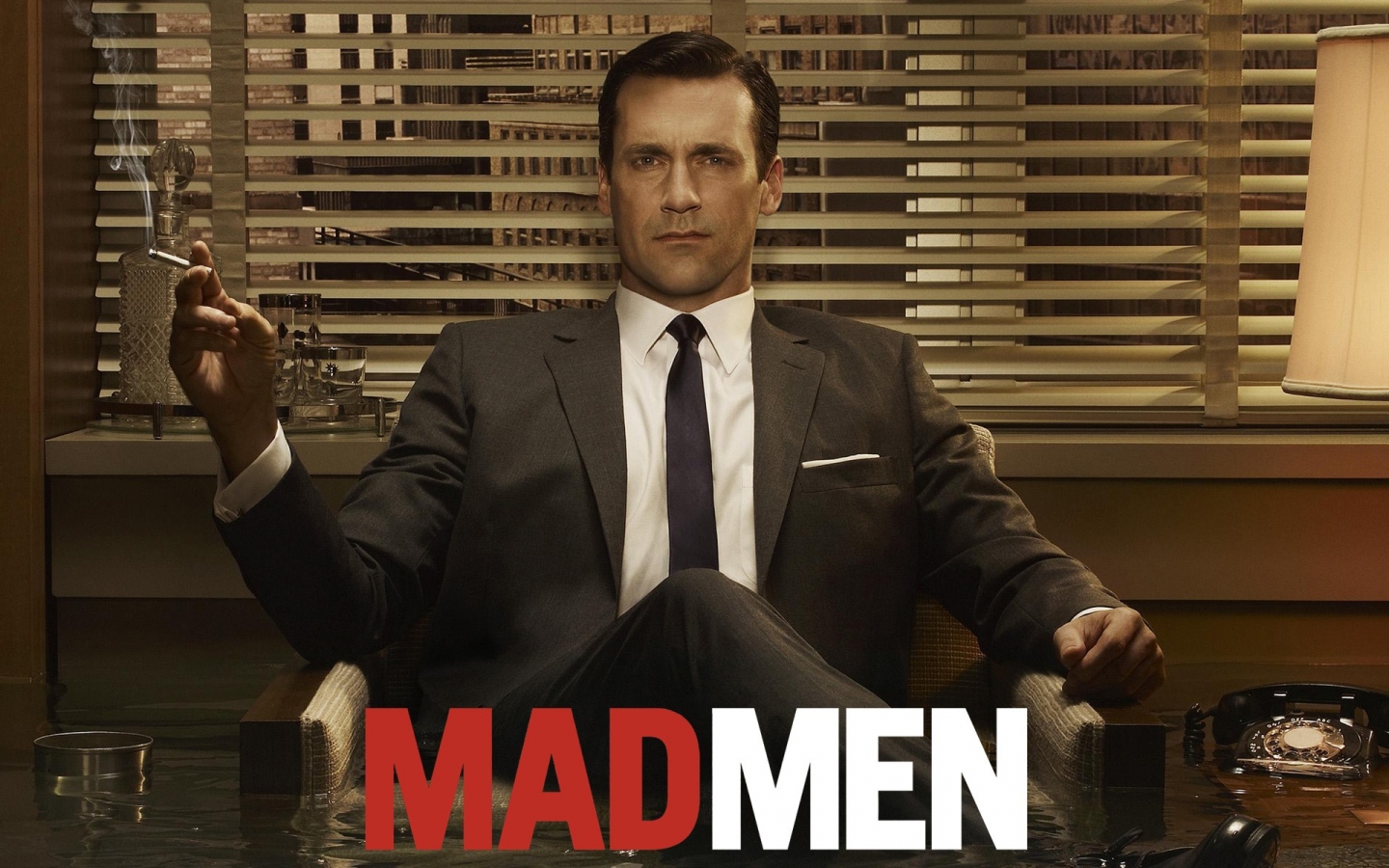 Period Drama - 'Mad Men' (2007 - present) AMC - Set in the 1950's - 60's, costumes are needed in order to make the historical information correct. Using a single camera can allow the actors to develop and get into their characters as they have to repeat the scene over and over again. This is because one camera is needed to film different angles. Choice of locations is broader as one camera can fit into a location better than multiple cameras.
Period Drama - 'Mad Men' (2007 - present) AMC - Set in the 1950's - 60's, costumes are needed in order to make the historical information correct. Using a single camera can allow the actors to develop and get into their characters as they have to repeat the scene over and over again. This is because one camera is needed to film different angles. Choice of locations is broader as one camera can fit into a location better than multiple cameras.Behind the Scenes Of 'Man Men'
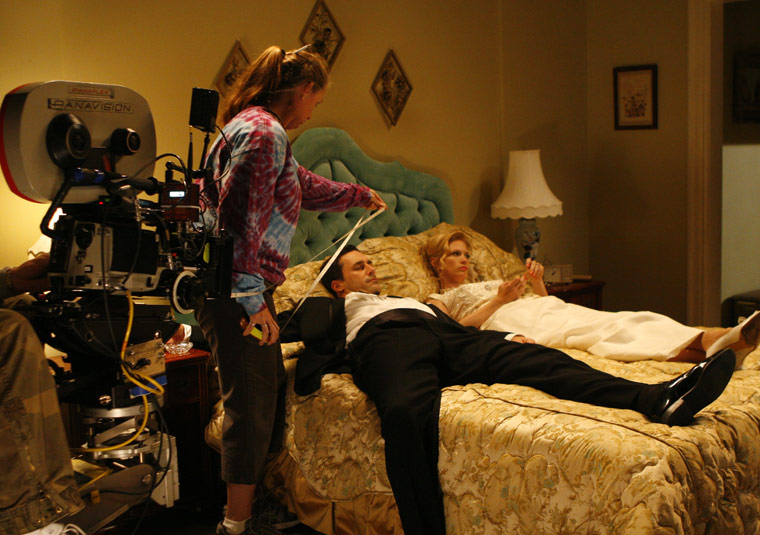
Crime - 'Breaking Bad' (2008 - 2013) AMC - Based around a man with cancer who goes into the drug business to provide money for his family. Using single camera techniques in a crime genre can give the opportunity to experiment with lighting. For example low key lighting can be used to create tension between characters. Like period dramas single camera techniques are also used to allow for actors to develop and get into their roles. Choice of locations are also broader.
Behind the scenes of Breaking Bad:
Horror - 'Halloween' - John Carpenter (1978) - This film uses a lot of point of view shots (P.O.V) to create the mystery in the killer, and uses only one camera. Single camera techniques can be used in horror to create suspense and tension. For example in 'Halloween' P.O.V (point of view) shots are used to create suspense and hide who the killer / monster is. Lighting may also be experimented with. Like the crime genre, low key lighting can be used to create horrifying shadows and create suspense between characters. With films like 'Paranormal Activity' (Oren Peli, 2007) single camera techniques are used to create footage that looks like it is recorded on a handheld camera. Again choice of locations are broader.
Opening Sequence to Halloween:
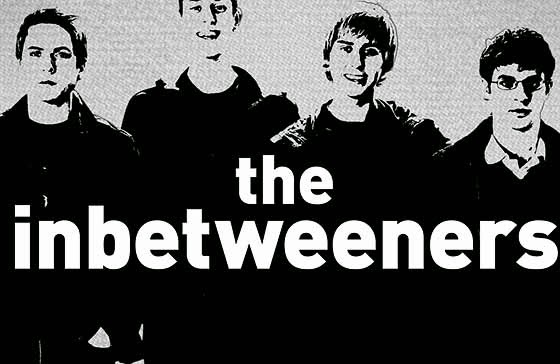 Comedy - 'The Inbetweeners' - (2008 - 2010) - Most shots in the show are shot on real locations and only require one single camera. By using single camera techniques, the choice of locations are broader. Also the actors are given the opportunity to develop and get into their roles as the scene is repeated over and over again. Also lighting can be adjusted to each shot / angle.
Comedy - 'The Inbetweeners' - (2008 - 2010) - Most shots in the show are shot on real locations and only require one single camera. By using single camera techniques, the choice of locations are broader. Also the actors are given the opportunity to develop and get into their roles as the scene is repeated over and over again. Also lighting can be adjusted to each shot / angle.Quick behind the scenes footage:
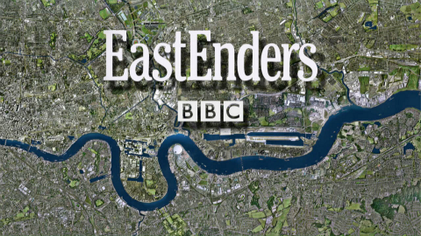 Soap Opera - 'EastEnders' - BBC - (1985 - present) - One of the most well known soaps, and is shot using real locations, but with multiple camera techniques. In the video below it shows a great example of multi-camera techniques and how they are needed for certain shots like stunts. This way they can capture every angle they need. Multi-camera techniques is very popular in shows like EastEnders as the filming can be completed in time for a Monday to Friday release (one episode shown a day). Also lighting can be adjusted for one scene. Locations are limited.
Soap Opera - 'EastEnders' - BBC - (1985 - present) - One of the most well known soaps, and is shot using real locations, but with multiple camera techniques. In the video below it shows a great example of multi-camera techniques and how they are needed for certain shots like stunts. This way they can capture every angle they need. Multi-camera techniques is very popular in shows like EastEnders as the filming can be completed in time for a Monday to Friday release (one episode shown a day). Also lighting can be adjusted for one scene. Locations are limited.Behind The Scenes:
There are also three common formats within single camera production which are commonly seen in TV rather than feature film. These are:
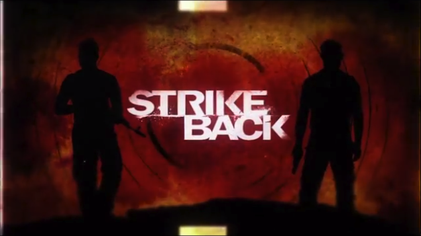 Series - Strike Back Series - Sky One (2010 - present) - This TV show has a main plot through each series but has sub narratives within each episode, some running over more than one episode.
Series - Strike Back Series - Sky One (2010 - present) - This TV show has a main plot through each series but has sub narratives within each episode, some running over more than one episode.
Serial - Hollyoaks - Channel 4 / E4 (1995 - present) - This specific TV programme runs continuously and never for a period of time. Like EastEnders, Hollyoaks uses multi-camera techniques.

Single Drama - 'Murder' - BBC Two (2012) - Aired as a single drama and is now being commissioned as a full series. It won the '2013 TV Single Drama Award' at the BAFTA.
Video of the awards for 'Murder' - http://awards.bafta.org/award/2013/television/single-drama
Summary
Advantages of single camera productions- Actors can improve their acting skills as the scene is repeated over and over again.
- More of the location can be used as there is only one camera, and other equipment using up the room.
- The director can have more control over each shot as there is only one camera.
- The audience can be submerged into the diegesis as the production will feel more personal.
- Less film is used / wasted, depending on how much is shot and how long the production is.
- Filmmakers with tight budgets can make single camera productions due to purchasing only one camera.
- Lighting can be controlled on each and every shot, allowing for the perfect shot.
- Master shots can be created as well as individual shots from the same scene, making it easier in post-production.
- Filming takes longer.
- The lengthy filming can be costly compared to multi-camera productions.
- Continuity errors are more common.
- Action that is recorded can be stop and started. This can become aggravating and appear stunted.
- Other people may not agree with the choice to have a single camera production rather than a multi-camera production.
Example Of A Film That Uses A Single Camera
References
Different Types Of Microphones - http://www.desktop-documentaries.com/different-types-of-microphones.html
Top Ten Period Dramas - http://www.theguardian.com/culture/gallery/2011/jan/09/ten-best-costume-dramas#/?picture=370333435&index=8
Breaking Bad Behind The Scenes Video - http://www.youtube.com/watch?v=9lai55d2BuQ
Breaking Bad Photo - http://www.washingtonpost.com/rf/image_606w/2010-2019/WashingtonPost/2013/08/10/Web-Resampled/2013-08-10/97b3426b-d07b-1f18-a631-6d8b38144a42_AMC-Breaking_Bad-5_1789--606x404.jpg
Halloween Opening Video - http://www.youtube.com/watch?v=ELF1DCf1ChA
Halloween Picture - http://upload.wikimedia.org/wikipedia/en/8/87/Halloween_cover.jpg
Inbetweeners Behind The Scene Video - http://www.youtube.com/watch?v=heM0Dm-FDk0
Inbetweeners Picture - http://whatculture.com/wp-content/uploads/2011/08/inbetweeners.jpg
EastEnders Information - http://en.wikipedia.org/wiki/EastEnders
EastEnders Behind The Scenes Video - http://www.youtube.com/watch?v=g2Y0Of3YJf4
EastEnders Picture - http://upload.wikimedia.org/wikipedia/en/a/ac/EastEnders_Title.png
Strike Back Picture - http://upload.wikimedia.org/wikipedia/en/5/5d/Strike_Back_title_2011.png
Hollyoaks Picture - http://en.wikipedia.org/wiki/Hollyoaks
Single Drama Awards Video - http://awards.bafta.org/award/2013/television/single-drama
Murder Being Commissioned Information - http://www.bbc.co.uk/mediacentre/latestnews/2013/murder.html
Man Men Picture - http://beyondthemarquee.com/wp-content/uploads/2013/04/mad-men-1.jpg
Mad Men Behind The Scenes Picture - http://images.amcnetworks.com/blogs.amctv.com/wp-content/uploads/2011/05/MMS1ep105_BTS_3237.jpg
Mad Men Behind The Scenes Video - http://www.youtube.com/watch?v=FnIYJF-drak
Mad Men Behind The Scenes Video Two - http://www.youtube.com/watch?v=CqUsiphxnn4
Double Indemnity Picture - http://steren93.qwriting.qc.cuny.edu/files/2011/10/DI8.jpg
Shotgun Microphone Picture - http://www.creativeplanetnetwork.com/dv/uploadedimages/Rode_NTG-2ShotgunMic.gif
Audio Systems For Film Production - http://cdn.shure.com/publication/upload/403/us_pro_audiovideoproduction_ea.pdf
Lavalier Microphone Picture - http://images.gizmag.com/inline/smartlav-5.jpg
Editing Suite Picture - http://www.workinentertainment.com/blog/wp-content/uploads/2013/12/video-editing-bay.jpg
Shooting Log Video - http://www.youtube.com/watch?v=7LAxfBfj94c
Zirus Episode One Video - http://www.youtube.com/watch?v=-u22tYwpNLc
Zirus Episode Two Video - http://www.youtube.com/watch?v=hy7t4_-r_KU
Zirus Episode Three Video - http://www.youtube.com/watch?v=_5tShXhRddg
Boom Operator Information - http://en.wikipedia.org/wiki/Boom_operator_(media)
Boom Mic and Boom Operator Picture - http://en.wikipedia.org/wiki/Boom_operator_(media)#mediaviewer/File:Tournage_de_film.JPG
Three-Point Light Picture - http://rouletterevolver.files.wordpress.com/2010/12/three-point.jpg
Paranormal Activity Information - http://www.imdb.com/title/tt1179904/
Top Ten Period Dramas - http://www.theguardian.com/culture/gallery/2011/jan/09/ten-best-costume-dramas#/?picture=370333435&index=8
Breaking Bad Behind The Scenes Video - http://www.youtube.com/watch?v=9lai55d2BuQ
Breaking Bad Photo - http://www.washingtonpost.com/rf/image_606w/2010-2019/WashingtonPost/2013/08/10/Web-Resampled/2013-08-10/97b3426b-d07b-1f18-a631-6d8b38144a42_AMC-Breaking_Bad-5_1789--606x404.jpg
Halloween Opening Video - http://www.youtube.com/watch?v=ELF1DCf1ChA
Halloween Picture - http://upload.wikimedia.org/wikipedia/en/8/87/Halloween_cover.jpg
Inbetweeners Behind The Scene Video - http://www.youtube.com/watch?v=heM0Dm-FDk0
Inbetweeners Picture - http://whatculture.com/wp-content/uploads/2011/08/inbetweeners.jpg
EastEnders Information - http://en.wikipedia.org/wiki/EastEnders
EastEnders Behind The Scenes Video - http://www.youtube.com/watch?v=g2Y0Of3YJf4
EastEnders Picture - http://upload.wikimedia.org/wikipedia/en/a/ac/EastEnders_Title.png
Strike Back Picture - http://upload.wikimedia.org/wikipedia/en/5/5d/Strike_Back_title_2011.png
Hollyoaks Picture - http://en.wikipedia.org/wiki/Hollyoaks
Single Drama Awards Video - http://awards.bafta.org/award/2013/television/single-drama
Murder Being Commissioned Information - http://www.bbc.co.uk/mediacentre/latestnews/2013/murder.html
Man Men Picture - http://beyondthemarquee.com/wp-content/uploads/2013/04/mad-men-1.jpg
Mad Men Behind The Scenes Picture - http://images.amcnetworks.com/blogs.amctv.com/wp-content/uploads/2011/05/MMS1ep105_BTS_3237.jpg
Mad Men Behind The Scenes Video - http://www.youtube.com/watch?v=FnIYJF-drak
Mad Men Behind The Scenes Video Two - http://www.youtube.com/watch?v=CqUsiphxnn4
Double Indemnity Picture - http://steren93.qwriting.qc.cuny.edu/files/2011/10/DI8.jpg
Shotgun Microphone Picture - http://www.creativeplanetnetwork.com/dv/uploadedimages/Rode_NTG-2ShotgunMic.gif
Audio Systems For Film Production - http://cdn.shure.com/publication/upload/403/us_pro_audiovideoproduction_ea.pdf
Lavalier Microphone Picture - http://images.gizmag.com/inline/smartlav-5.jpg
Editing Suite Picture - http://www.workinentertainment.com/blog/wp-content/uploads/2013/12/video-editing-bay.jpg
Shooting Log Video - http://www.youtube.com/watch?v=7LAxfBfj94c
Zirus Episode One Video - http://www.youtube.com/watch?v=-u22tYwpNLc
Zirus Episode Two Video - http://www.youtube.com/watch?v=hy7t4_-r_KU
Zirus Episode Three Video - http://www.youtube.com/watch?v=_5tShXhRddg
Boom Operator Information - http://en.wikipedia.org/wiki/Boom_operator_(media)
Boom Mic and Boom Operator Picture - http://en.wikipedia.org/wiki/Boom_operator_(media)#mediaviewer/File:Tournage_de_film.JPG
Three-Point Light Picture - http://rouletterevolver.files.wordpress.com/2010/12/three-point.jpg
Paranormal Activity Information - http://www.imdb.com/title/tt1179904/





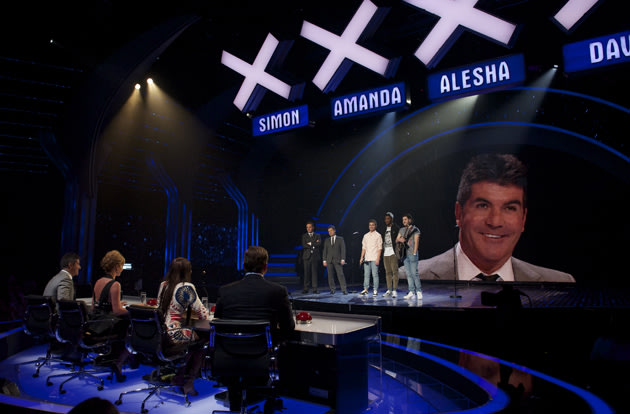


Ollie,
ReplyDeleteYou have such an attention to detail and put so much effort into your work - I applaud you!
This is easily a merit and probably a distinction already too but there are a couple of little changes I would like you to make to solidify that:
- reflectors are not just used because they are cheap, they help to add light or make it even/more similar to another shot (we have one at college - try it, it's good with natural light too)
- mention saturated light on shows like the news and how it is essential
- mention the term boom mic and briefly explain it
- you don't say that BGT is a multi camera show when talking about sound. Make that clear.
- say why each single cam genre suits being shot one with camera
- finish with a summary of advantages and disadvantages of single cam production compared to multi cam.
EllieB
Wonderful - distinction achieved.
ReplyDeleteEllieB
This comment has been removed by the author.
ReplyDeleteinteresting blog, this blog is very nice and good knowledge of media production.
ReplyDeleteMulti Camera Video Production
Thanks for sharing
boite de production video
ReplyDeletehttp://www.legend-one.ca/
Bienvenue sur legend-one.ca! Nous sommes la meilleure boite de production video, production video corporatif à Montréal. Découvrez la définition de l'
Shared info is very helpful.
ReplyDeleteAluminium Scaffolding Manufacturer
Hello, this is fastidious post I actually loved reading this.
ReplyDeletecamera poles
Your blogs and every other content are thus interesting and helpful it makes me return back again.
ReplyDeletecar wash camera systems